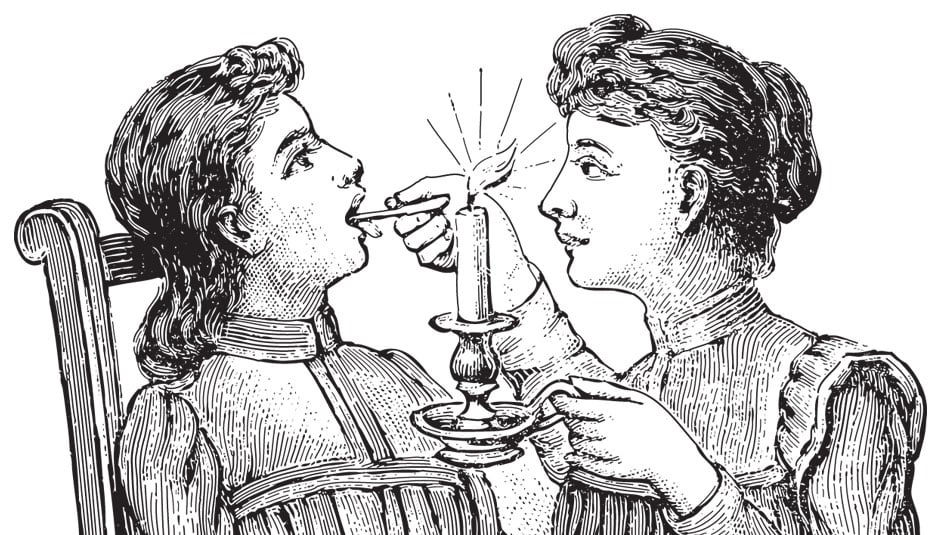What if Diabetes Care Providers Still Made House Calls?

Think back to the first days and weeks after a Type 1 diabetes diagnosis. Did you feel prepared to manage the disease after the cursory training you received at the hospital, or, in some cases, the physician’s office? Were you confident in your ability to recognize symptoms? To make round-the-clock decisions about meal choices, dosing, treating highs and lows, etc.?
What if you could have brought a nurse or diabetes educator home with you? What difference would it have made to have such a resource—at least, until found your footing?
Apparently, it was once common practice for a care provider to follow a family home after a newly diagnosed child was discharged from the hospital. In the late 1920s, the “Wandering Diabetic Nurse,” the ancestor of the Certified Diabetes Educator, helped families to get started. She taught children the “Benedict Test,” the process of testing for sugar in the urine using Benedict solution. She also instructed patients and their families to compute carbohydrates and other food values, prepare meals, treat insulin reactions, respond to emergencies, and more.
This professional figure was so-named because she was “free to wander in whatever direction the patient might call her.” And she crossed racial, cultural, and economic lines. If families did not have the means to pay for temporary, full-time services out of pocket, they could still benefit. Thanks to Elliott P. Joslin, the world-renowned diabetologist, there was a fund created for such scenarios. Joslin solicited contributions from wealthy patients and other donors. He believed the program would empower patients and also reduce costs. “Teaching is cheaper than nursing,” Joslin was known to say.
According to the American Journal of Nursing, the first “Wandering Diabetic Nurse” was Lovilla E. Winterbottom from Massachusetts. Winterbottom graduated from nursing school in 1927. After learning to care for diabetes, she began to accompany patients home and would remain in the household as long as she determined was necessary. In some cases, she also accompanied the child to school to train teachers and other caregivers. She frequently made follow-up visits. Winterbottom reported at the time that her services were always welcomed; she did not encounter any resistance from families. During periods in which there was no need for her in-home services, Winterbottom trained newly diagnosed patients in their hospital rooms. She also shared information at summer camps and in public lectures.
It’s hard to imagine such a resource existing today. An in-home assistant may sound like a luxury, especially considering how many individuals lack access to insulin and other basic supplies. But for many families, such a resource might make an enormous difference, if it meant establishing proper management routines from the get-go.
I recently met a school nurse and diabetes educator who created a “Diabetes Club” to support high school students. She formed the group for two reasons: to improve connections between students living with the disease and to educate students on the basics of diabetes management. I was surprised to hear the latter, thinking that surely teenagers know how to count carbs, determine appropriate doses, etc. But she said that many of her students had never learned these skills because their parents had never learned them.
“In some cases, doctors took one look at parents and assumed that they couldn’t manage the math. So, they instructed those parents to always give X units at meal time, and that was that.” As a result, she explained, these students had been living with elevated blood sugars for more than a decade, depending on the age of diagnosis.
I’m hopeful that healthcare providers today take more care to educate parents, regardless of their seeming intellectual or economic abilities. I’m also hopeful that information about Type 1 diabetes is much more widely available, thanks to the web and social media. But I’m sure that there are still plenty of individuals falling through the cracks when it comes to education and training.
Providing a phone number for parents to call after they return home may not suffice. According to a 2016 UK study, nearly all parents feel overwhelmed, confused, and in need of more emotional and clinical support in those first weeks after a Type 1 diabetes diagnosis; but many do not reach out for needed help. This may be because they feel embarrassed by their ignorance or their inability to cope. Or, it may be because they can’t come up for air to do so. Hence, researchers suggested that providers schedule home visits. If this isn’t feasible, providers should at least initiate phone calls with parents.
What about peer support? Can’t other “veteran parents” provide this practical and emotional support? Researchers acknowledged the potential benefit of this resource, but cautioned that studies show mixed results on the fruitfulness of peer support. “Our findings suggest that a possible reason for the lack of positive effects may be because peer support does not suit all parents. Not only may parents be put off by negative experiences, they may also be exposed to information which contradicts clinical recommendations.” (I can recall being directed to veteran parents and feeling a little bit like we were being “bummed off.”)
It’s routine for providers to initiate contact in other circumstances, such as after a major surgery or after a patient is discharged from mental health treatment. Is it possible for diabetes care providers to assume a more proactive role during the initial weeks after diagnosis? It seems to me that teaching is not only “cheaper than nursing;” it’s also a fundamental responsibility of healthcare.
Do you know of any diabetes care providers who are going above and beyond? Did you have a positive experience during the initial period after a diagnosis? Let us know by writing to us at submissions@insulinnation.com. We’d love to share your story.
Thanks for reading this Insulin Nation article. Want more Type 1 news? Subscribe here.
Have Type 2 diabetes or know someone who does? Try Type 2 Nation, our sister publication.